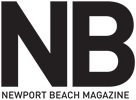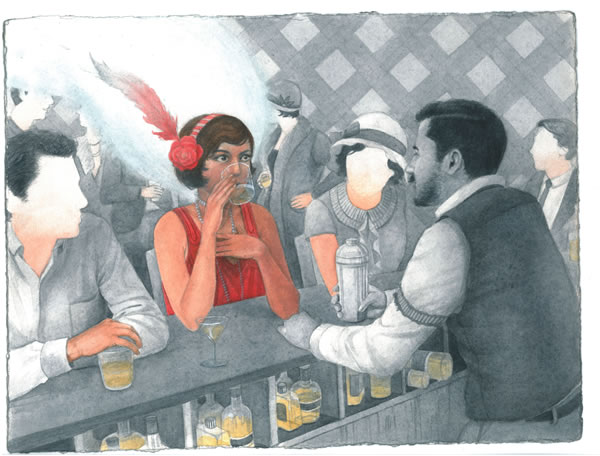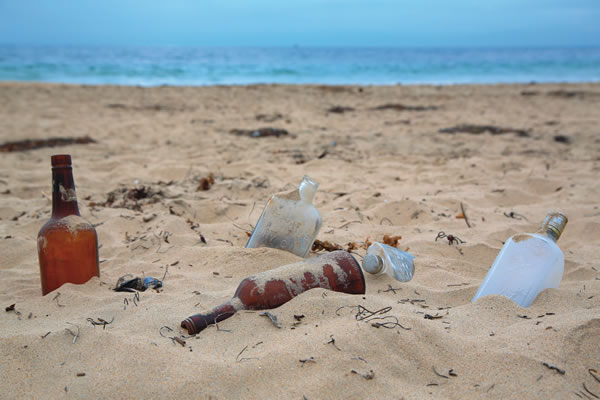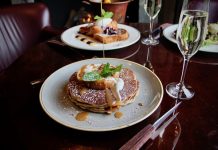From bathtub gin to secret speakeasies and midnight hooch deliveries, Newport Beach is rich with tales of Prohibition-era antics.
-By Marguerite A. Suozzi
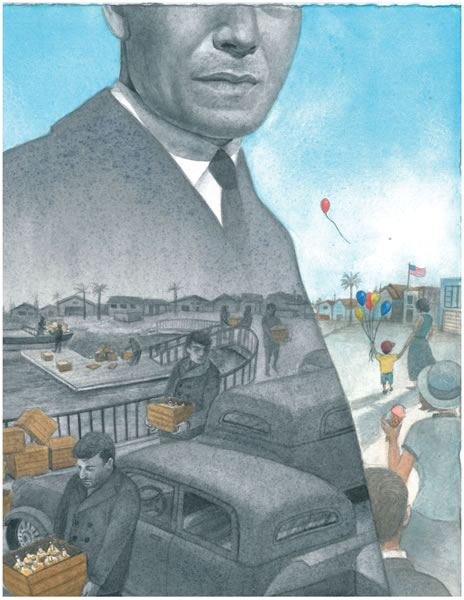 Before Newport Beach’s incorporation in 1906, therewas little liquor to be found for sale in this sleepy beach community. In fact, Orange County was pretty dry overall, thanks in part to an influential temperance movement that aimed to keep saloons from opening. But that doesn’t mean alcohol was nowhere to be found.
Before Newport Beach’s incorporation in 1906, therewas little liquor to be found for sale in this sleepy beach community. In fact, Orange County was pretty dry overall, thanks in part to an influential temperance movement that aimed to keep saloons from opening. But that doesn’t mean alcohol was nowhere to be found.
According to Henry Lancey Sherman’s “A History of Newport Beach,” the initial policy governing alcohol in Newport after incorporation was to grant one wholesale and one retail liquor license each for the entire city. This policy was abandoned shortly after 1906 as more and more licenses were granted to applicants. As a result, those seeking alcohol could find it for sale with relative ease. But in 1916, Newport Beach voted itself dry—putting several producers and vendors out of business. Residents and visitors didn’t lose their thirst for the hooch, however. By the time Prohibition was nationally enacted in 1920, Newport already had its fair share of bootleggers who went to work catering to the local demand. Records show that as far back as 1907, police were putting blind pigs (illicit speakeasies) out of business, and in 1908, the town authorized Marshall Hermes to hire detectives to sniff out many more.
Such strict rules may have had an effect contrary to the temperance movement’s intention, says local historian Phil Brigandi. “By moving away from temperance to Prohibition, you simply encouraged so much law-breaking,” he explains. In his book, “Bawdy Balboa,” Judge Robert Gardner says somewhat exaggeratedly: “Prohibition destroyed a whole generation of law enforcement officers who simply gave up trying to enforce an unenforceable law, and too many times, sold out to the bootleggers.” Whether or not this is entirely accurate, it is clear—from the activities of rumrunners, bootleggers and speakeasy proprietors, bolstered by citizen demand for liquor—that Prohibition became hopelessly unenforceable.
It was the U.S. Coast Guard that was charged with manning the country’s coastlines and preventing smugglers from bringing contraband onto U.S. soil from our “wet” neighbors in Canada and Mexico. In 1925, when a U.S.C.G. incursion on rumrunning ships on the East Coast succeeded in largely decimating a major fleet of smugglers, many rumrunners relocated to the West. While the Coast Guard racked up many victories against the rumrunners both on land and at sea, it seems it was the rumrunners who won in the end.
Bawdy Balboa
Balboa was popular during Prohibition for its secret speakeasies, says Jeff Delaney, who’s authored several books on Newport Beach history. But they were no secret. The Ritz Theater, for example, built in 1928 on Central Avenue by J.P. Greeley, became a popular haunt among Hollywood celebrities, thanks to its lively scene. And then there were the more low-key establishments. “Here’s how it worked in Balboa: The business district was essentially Main Street, which is two short blocks, and a small portion of Central Avenue, which is now Balboa Boulevard,” Jeff explains. “Pure grain alcohol was available in a few places, like the Breakers Pharmacy on the first floor of the Balboa Inn, or at Dad Workman’s gambling parlor. At the Breakers, 25 cents would get you one ounce. At Workman’s joint, if you asked for a carton of cigarettes and gave him a wink, Dad included an ounce of alcohol in the carton.”
Once people obtained their booze, they’d head to some of the better-known establishments in town, like the Green Dragon soda fountain, and order a “set up,” or what we call a mixer. (Green River lime soda and grapefruit juice were popular choices to make the straight alcohol more palatable.)
The Green Dragon was a popular spot on Balboa for people partaking in undercover cocktailing and rumrunners who made late-night drop-offs at the city dock. Robert, who happened to have a summer job there, describes some of the most exciting parts of his gig washing glasses at the soda fountain: “Usually, we closed early. There isn’t much late-night business in a soda fountain,” he wrote in the book. “However, on certain nights, we stayed open. I never asked and was never told how we knew which nights to stay open. I do know that these were the nights the rumrunners came in.” He described the illicit activity in detail: “A long line of big black sedans would line up on Washington Street. The drivers would get out and stand around and smoke cigarettes. Then I would hear the muffled, rumbling roar of high-speed motors idling up the bay. Pretty soon, sleek, powerful speedboats would come into view and moor at the city dock. Men would get out of the speedboats and unload cases of liquor on the dock. The drivers of the cars would pick up the cases and load them into their cars. When the cases were loaded, the drivers would take off.
“The speedboat drivers, on the other hand, liked to stick around. They would come into the soda fountain and gorge themselves on ice cream sodas, sundaes, malts and banana splits,” Robert continued. “They were a tough-looking, unshaven bunch … and they all carried .30-30 rifles.” He came to know this motley crew as “Tony’s men,” a name given to them by the proprietor of the Green Dragon, Dick Whitson. It wasn’t until later that Robert learned his boss was referring to Tony Cornero—one of the most notorious characters to ever step foot in Newport Beach.
Crystal Cove’s Characters
Tony “The Admiral” Cornero, an Italian immigrant, was known for smuggling alcohol into the U.S. through California’s beaches. He brought in whiskey from Canada and rum from Mexico—or rather, his men did, while Tony orchestrated everything from a distance. His men would make large deliveries along the Balboa city dock. In 1926, Tony was arrested for bootlegging, and upon his release, relocated to Las Vegas, where he became pivotal in the development of the Strip.
According to Jeff, “[Tony] sent men on speedboats (there was no speed limit in the harbor back then) to deliver booze to the harbor master’s dock in the wee hours of the morning, where men would be waiting to pick it up and deliver it to restaurants up in LA.” But Crystal Cove was another drop-off in Newport where beach-goers and residents encountered more of Tony’s men.
Laura Davick, a lifelong resident of Crystal Cove and founder of the Crystal Cove Alliance says the cove was an ideal place to try to smuggle in the bootleg liquor because it was such a remote destination. “Boats painted black used to come in offshore. When they thought they were going to be detected, they would tie up the bottles in burlap bags and gently drop them overboard, and then these bags of liquor would wash ashore here,” Laura says. “A couple of people that I interviewed [for my book] would say that they would often take walks on the beach, looking for the bootleg bottles. This one person would sell these bottles to his big brother for a quarter.”
Laura co-authored “Crystal Cove Cottages: An Island in Time” along with Karen Steen, which describes how Newport emerged as a vacation destination in the early 1920s. In the words of Ron Wood, a source for Laura and Karen’s book, “One year word got out that surf fishermen were finding bottles rolling in the waves, and the cove enjoyed a sudden surge in popularity.”
Over in Balboa, Seymour Beek, co-owner of the Balboa Island Ferry, recalls a humorous story about a case of bubbly. “When [my dad] was harbor master in the 1920s, he towed a large speedboat off the sandbar at the harbor entrance,” he explains. “Boats frequently got stuck on the bar in that era. When it was free of the bar, the speedboat headed out to sea in a hurry and nobody even said ‘thank you.’ A few days later, a box covered by a piece of canvas was left anonymously on my dad’s dock during the night. The box contained a case of very good Champagne.”
Clearly there were perks to helping out a rumrunner in the lurch. NBM
Prohibition-Era Cocktails
There’s no need to go back in time to experience the best of Newport’s scandalous speakeasies. These five local hangouts are serving up classic Prohibition-era cocktails with a decidedly contemporary twist:
![]() #75 The recipe for a French 75, first published in 1930 in American bartender Harry Craddock’s, “The Savoy Cocktail Book,” originally called for a heady combination of gin, lemon juice and simple syrup floated with Champagne. At Brasserie Pascal, the lighter #75 is a mix of N.V. Grand Imperial Brut, Mission Bells brandy and the house sour mix, served in a Champagne flute. (949-640-2700; brasseriepascal.net)
#75 The recipe for a French 75, first published in 1930 in American bartender Harry Craddock’s, “The Savoy Cocktail Book,” originally called for a heady combination of gin, lemon juice and simple syrup floated with Champagne. At Brasserie Pascal, the lighter #75 is a mix of N.V. Grand Imperial Brut, Mission Bells brandy and the house sour mix, served in a Champagne flute. (949-640-2700; brasseriepascal.net)
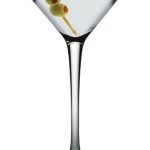 Martini Gin martinis came into existence before Prohibition, but for some reason rose in popularity during the Jazz Age. Bluewater Grill mixes this classic cocktail with vodka, and flavors like pomegranate and Asian pear. (949-675-3474; bluewatergrill.com)
Martini Gin martinis came into existence before Prohibition, but for some reason rose in popularity during the Jazz Age. Bluewater Grill mixes this classic cocktail with vodka, and flavors like pomegranate and Asian pear. (949-675-3474; bluewatergrill.com)
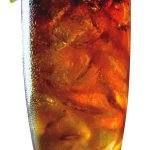 Dark ’n‘ Stormy Invented in Bermuda just after World War I, the cocktail is not the trademarked Dark ‘n’ Stormy it if it’s not crafted with Gosling’s Black Seal Rum and ginger beer. Duke’s Place at Balboa Bay Resort stays true to the original recipe, served in a highball glass on the rocks. (949-645-5000; balboabayresort.com)
Dark ’n‘ Stormy Invented in Bermuda just after World War I, the cocktail is not the trademarked Dark ‘n’ Stormy it if it’s not crafted with Gosling’s Black Seal Rum and ginger beer. Duke’s Place at Balboa Bay Resort stays true to the original recipe, served in a highball glass on the rocks. (949-645-5000; balboabayresort.com)
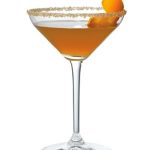 Hennessy Sidecar The origin of the Sidecar is nebulous, so let’s go with the most entertaining history: Invented at Harry’s New York Bar in Paris after World War I, the cocktail is named after an eccentric army captain who was chauffeured to the bar in a sidecar. The recipe calls for brandy, Cointreau, fresh lemon juice and a sugar-rimmed glass. At Mastro’s Ocean Club, the cocktail is served up with Hennessy VS Cognac, Cointreau, sweet and sour mix and fresh lime juice. (949-376-6990; mastrosrestaurants.com)
Hennessy Sidecar The origin of the Sidecar is nebulous, so let’s go with the most entertaining history: Invented at Harry’s New York Bar in Paris after World War I, the cocktail is named after an eccentric army captain who was chauffeured to the bar in a sidecar. The recipe calls for brandy, Cointreau, fresh lemon juice and a sugar-rimmed glass. At Mastro’s Ocean Club, the cocktail is served up with Hennessy VS Cognac, Cointreau, sweet and sour mix and fresh lime juice. (949-376-6990; mastrosrestaurants.com)
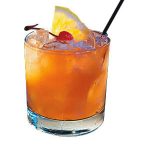 House Old Fashioned A haven for classic Jazz Age cocktails, 3-Thirty-3 Waterfront combines its Bulleit Bourbon-based old fashioned with aromatic bitters, sugar, soda and a fragrant orange peel garnish. (949-673-8464; 3thirty3nb.com)
House Old Fashioned A haven for classic Jazz Age cocktails, 3-Thirty-3 Waterfront combines its Bulleit Bourbon-based old fashioned with aromatic bitters, sugar, soda and a fragrant orange peel garnish. (949-673-8464; 3thirty3nb.com)

